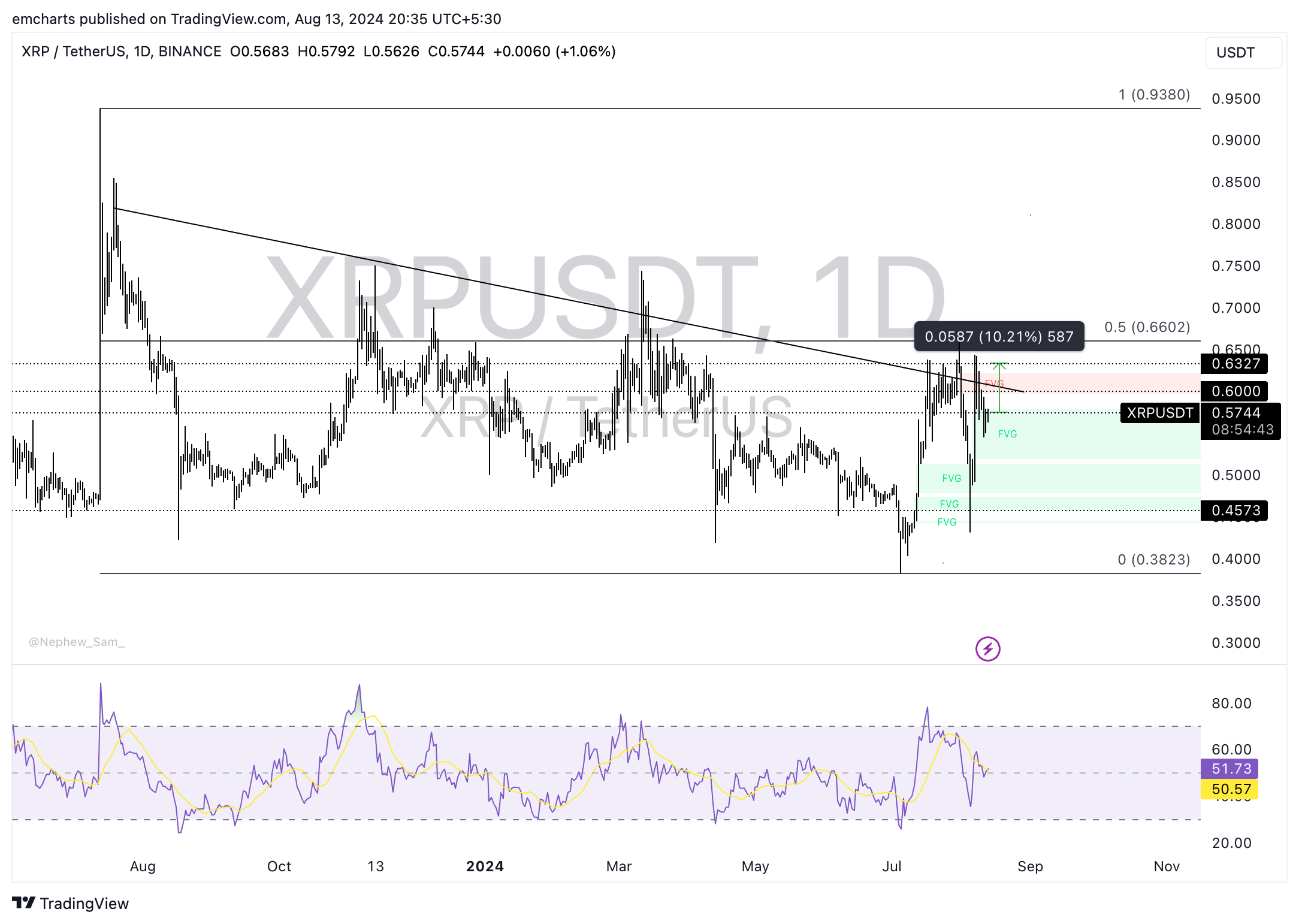XRP eyes 10% rally amid bullish on-chain metrics as Ripple makes steady gains
- XRP supply on exchanges is on a steady decline, signaling a decline in selling pressure per Santiment data.
- Ripple started testing its stablecoin in private beta, while traders digest SEC lawsuit ruling.
- XRP whales drop their tokens, while retail traders accumulate since last week’s crypto crash.
- XRP extends gains to $0.57 and eyes 10% rally to $0.63 in a bullish scenario.
Ripple (XRP) shared positive developments with traders in the past week, following the end of the Securities & Exchange Commission (SEC) lawsuit against the firm. XRP erased its losses and held steady above key support at $0.57 on Tuesday.
On-chain metrics show bullish potential in the native token of the XRP Ledger amid other positive developments in the ecosystem.
Daily digest market movers: XRP on-chain metrics support bullish thesis
- Santiment data shows that XRP supply on exchanges is on a steady decline. As XRP tokens held on exchange wallets reduce, there is less availability of the token to sell, reducing the selling pressure on the asset.
- Dwindling exchange supply is, therefore, considered a sign of potential gains in the altcoin price.
 [20.56.34, 13 Aug, 2024]-638591661477042517.png)
XRP supply on exchanges vs. price
- XRP large wallet investors have shed their token holdings, while retail holders accumulate the asset, even as Ripple extends gains. Santiment data shows XRP supply distribution in the last week.
 [21.03.56, 13 Aug, 2024]-638591661237503102.png)
XRP supply distribution vs. price
- Ripple started its private beta testing for stablecoin RippleUSD (RUSD). The firm informed traders that the token is not available for trading or sale since regulatory approval awaits.
Technical analysis: XRP eyes 20% gains
Ripple is in a multi-month downward trend as seen in the XRP/USDT daily chart. XRP extends gains on Tuesday, up to $0.5744 at the time of writing. XRP could extend gains by 10.21% and rally toward the $0.63 target.
The $0.63 level is key to XRP, and the altcoin faces resistance at the psychologically important $0.60 level. The Relative Strength Index (RSI) reads 52, signaling positive momentum in XRP price trend.

XRP/USDT daily chart
XRP could find support in the Fair Value Gap (FVG) between $0.5888 and $0.5785 in a bearish scenario.
Bitcoin, altcoins, stablecoins FAQs
Bitcoin is the largest cryptocurrency by market capitalization, a virtual currency designed to serve as money. This form of payment cannot be controlled by any one person, group, or entity, which eliminates the need for third-party participation during financial transactions.
Altcoins are any cryptocurrency apart from Bitcoin, but some also regard Ethereum as a non-altcoin because it is from these two cryptocurrencies that forking happens. If this is true, then Litecoin is the first altcoin, forked from the Bitcoin protocol and, therefore, an “improved” version of it.
Stablecoins are cryptocurrencies designed to have a stable price, with their value backed by a reserve of the asset it represents. To achieve this, the value of any one stablecoin is pegged to a commodity or financial instrument, such as the US Dollar (USD), with its supply regulated by an algorithm or demand. The main goal of stablecoins is to provide an on/off-ramp for investors willing to trade and invest in cryptocurrencies. Stablecoins also allow investors to store value since cryptocurrencies, in general, are subject to volatility.
Bitcoin dominance is the ratio of Bitcoin's market capitalization to the total market capitalization of all cryptocurrencies combined. It provides a clear picture of Bitcoin’s interest among investors. A high BTC dominance typically happens before and during a bull run, in which investors resort to investing in relatively stable and high market capitalization cryptocurrency like Bitcoin. A drop in BTC dominance usually means that investors are moving their capital and/or profits to altcoins in a quest for higher returns, which usually triggers an explosion of altcoin rallies.

